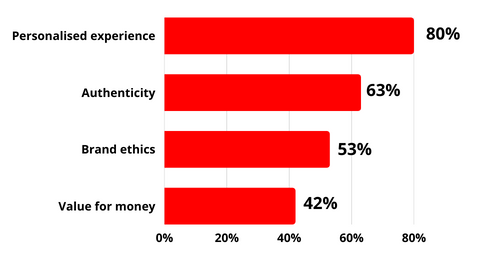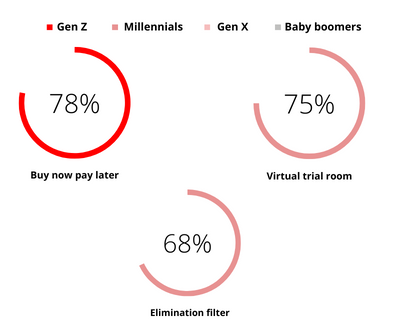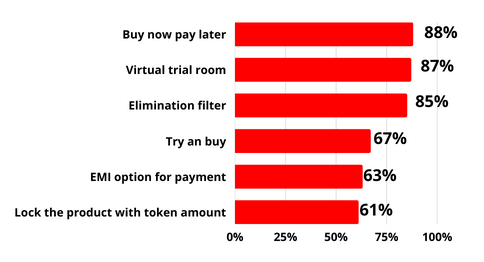Why understanding consumer needs is vital?
Marketing is an essential aspect of any business. It helps to create a brand and establish a connection with the customer. Understanding consumer needs is vital for marketing strategy because it helps to develop and customise a marketing plan that will be successful in the long term. Without understanding the needs of its consumers, a company will be operating blindly and may ultimately suffer losses.
The market is complex, and consumers are not always clear about what they want. A great example of this is the personal computer. In the early 1990s, personal computers were not widely used because they were too expensive for many people. Consumers did not have a clear understanding of how a personal computer could be beneficial for their lives. Further high prices and bulky setup proved impractical for many, so the sales were low. However, understanding the consumer perspective aided in the transformation of computers. To help combat the issue of high prices, PC manufacturers started to produce cheaper computers that were highly compact and more power efficient, and perfect for everyday use, making way for laptops. By now, you get the crux!
The first step in understanding consumer needs is getting to know them better. Here are four consumer preferences set to shape their purchase decisions:
1. Personalisation
Personalisation is the key to a successful business as it helps a company to build and maintain customer loyalty by providing them with what they want and when they want it. It benefits consumers by making them feel appreciated and valued by the company and drives the purchase decision of 80% of the consumers [1]. It is also a way for businesses to stay competitive in the market. Various channels such as emails, websites, social media, and mobile apps can aid in personalisation. There are many ways to achieve this, such as:

- Creating an engaging customer experience through customisation. The most common method of personalisation is through customisation. This means tailoring products and services to meet different customers’ specific needs and requirements. It can also be achieved through customising the customer experience, which includes everything that happens before, during, and after a purchase.
- Engaging with customers through social media. We live and breathe social media. Hence a business can benefit hugely from engaging with customers there. Customers are more likely to buy from a company if they feel they are being treated as individuals with unique needs and preferences rather than just another faceless number in a long line of customers.
- Building loyalty and customer engagement. Customer surveys are a powerful tool that retailers can use to help them understand their target market. They can also be used to help identify where the target market is spending time, what they are looking for, and what they may buy next. The best way to explain this is through an example. Imagine you’re running a restaurant and want to offer your customers the best experience possible. You can use data from your customer database to understand what they like and dislike. You might notice that one group of customers always orders the same dish, while another only orders dessert. This information could help you deliver a tailored experience to your customer which can later enhance customer loyalty.
- Creating personalised content. Companies are now using personalised content to connect with their audience more intimately and make them feel like they are being addressed personally. They also use it to create a sense of urgency in their customers’ minds by showing them offers that are exclusively for them or that will expire soon.
- Providing a personalised experience in physical stores. It’s a customer-centric approach to business that helps improve customer retention and loyalty. Technological advancement has given personalised retail a new lease, even though the concept of personalised retail is not new. Retailers can now provide a personalised experience by leveraging data and analytics, enabling them to gain insight into their customers’ preferences, interests and behaviours.
Also read: How To Develop Customer Loyalty And Create Brand Loyalists
2. The Buy Now, Pay Later Option
The Buy Now, Pay Later Option is a new trend in the consumer industry. Consumers are now able to buy items online and pay for them later. This option is convenient and saves consumers money in the long run. This is because it offers a way for people to purchase goods without worrying about paying them off immediately. It also includes no interest or credit requirements for the borrower, one of the primary reasons for its gaining popularity and a sought-after choice for Gen Z [1].

Companies like Amazon offer consumers this option. They have been around for a few years and have seen a significant rise in popularity over the past few years. The idea behind these companies is that they allow you to buy an item today but pay for it over time with no interest or fees.
3. Virtual Trial Rooms
Virtual Trial Rooms are a way for consumers to get a feel of the product before they buy it. It gives consumers the ability to experience the product before they purchase it and helps them make an informed decision about what products they want, rather than just buying something because of its design or brand. This is done by simulating an environment where you can interact with the product and see how it works in real life. 3D rendering technologies like AR and VR help create virtual trial rooms, allowing the customer to choose from a wide variety of available choices.
Virtual Trial Rooms are not just limited to the fashion industry. Infact, they are also the latest trend in the real estate industry, where people virtually walk through a potential home without having to see it in person. The best thing about these rooms is that they let you know what you are getting into before you even go out and buy a house. You can see if the neighbourhood is suitable for your family, if there are any schools nearby, or if there is enough room for all of your furniture. Virtual trial rooms are a concept out of the metaverse that can revamp the entire shopping experience.

4. Elimination filter
As straightforward as it may sound, these filters are lacking on almost all eCommerce websites. The need for an elimination filter results from the vast amount of information on the internet. With so much information available, it becomes difficult for people to find what they need and focus on their tasks. It so happens that a customer often knows for sure what they do not need rather than what they need. The elimination filter is a way for consumers to weed out irrelevant products or companies that don’t meet their needs. Some websites will have an “x” next to these products so the user can quickly switch them out of their shopping cart and move on with their task. This saves time and makes it easier for people to find what they need and .
Also read: The Rise of UGC & The Consumer’s Love Affair With Word Of Influencers
Conclusion
Internet and the introduction of e-commerce have disrupted the way retail used to function. This trend will continue to grow in the future, with more and more people shopping online rather than in stores. In conclusion, marketing campaigns have changed significantly over the years. With AI, businesses can look at providing virtual trial rooms and personalised experiences for their customers. As technology advances and becomes more widespread, marketers have to find new ways to stay ahead of their competition and insights such as these can help them stay ahead in the game.
Download the report to know which other consumer trends are here to stay.
















